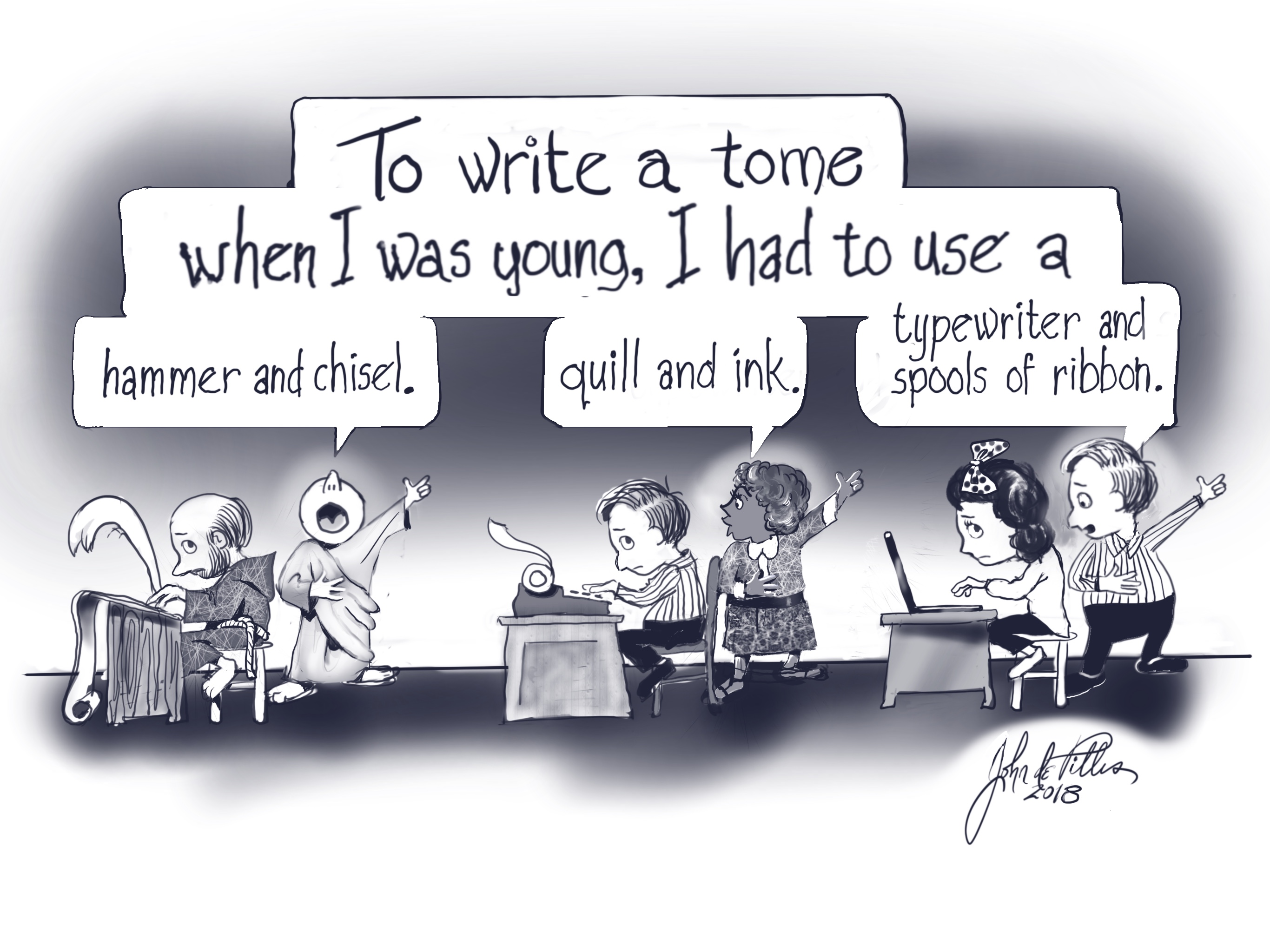Why to Write a Book
Have you ever thought about writing a book? Today’s technology makes doing so easier than ever, thanks to portable computers, powerful editing and typesetting software, and file-sharing and collaboration tools. On the other hand, writing a book may seem less necessary, given the many outlets for survey articles and the ease of self-publication on one’s own website or blog. I would like to explain why you should consider writing a book, with particular reference to SIAM as a publisher and my own experience in writing four SIAM books.
A printed book is something you can hold in your hand, give to your friends, family, and colleagues, and keep on your desk or bookshelf. A physical book is available in libraries and will potentially outlast digital storage (it is certainly immune to hard disk crashes and cyber attacks). A journal paper published in PDF form does not have these benefits. Nevertheless, most SIAM books are also accessible in digital form via the “e-books for Institutions” program, “e-books for Individuals” program, or both; this maximizes availability.
As a (SIAM) book author, you have control over length, format, design, and content, with few constraints. You can include marginal notes [1], exploit color however you wish [3], or generate the book from MATLAB scripts [4] or Jupyter notebooks. Whatever the format and content, you must convince reviewers that the book is worth publishing. However, criteria are very different from those of a research paper. Reviewers will focus on whether the book is sufficiently different from existing publications and if a market exists for it, rather than whether it contains significant new results.
The marketing efforts of the publisher—such as actively encouraging adoption as a course text—can help your book (and thus your work) reach a diverse audience. By contrast, your papers are probably most often found via citations or Google searches nowadays.

A book can cement your reputation as a subject matter expert, especially if you are the first to write a book on a particular topic. My 2008 Functions of Matrices: Theory and Computation [2] was the first book on matrix functions and is already my second most-cited publication. Indeed, many authors find that books are among their most-cited works. Writing a book is therefore one strategy for increasing both your citations and the impact of your work.
Opportunities for new books abound, especially in the area of data science. SIAM has recently started a new Data Science book series with Ilse Ipsen as editor-in-chief, and is keen to hear from potential authors.
Even in disciplines saturated with books, there is always scope for one that presents new approaches and ideas. This is why new textbooks on calculus, linear algebra, and numerical analysis are published every year (I have previously written about the elusive search for the perfect numerical analysis textbook).
When publishing a book with SIAM, you receive individual attention from when you first approach an acquisitions editor until after publication. You will have some of the best copy and production editors polishing your manuscript, a designer who can work with you to produce an attractive cover, a fully-developed marketing plan, and the opportunity to help promote your book.
Although monetary gain is not usually a motivation for writing an academic book, SIAM authors do receive royalties, which some donate to the SIAM Student Travel Fund. By publishing with SIAM, you will be helping the organization fulfill its goal of communicating mathematics to applied mathematicians, engineers, and scientists—including students and researchers—across universities, laboratories, and industry.
If this article has piqued your interest in writing a book, take a look at SIAM’s online book page (in particular, see the “Author Handbook”). Also check out the video “From Authors: Why Publish a Book with SIAM” on the SIAM YouTube channel for perspective from SIAM authors. Once you have an idea of what your book will look like, contact one of SIAM’s acquisitions editors.
Writing a book is not easy (I’ve provided some tips on my blog), but in my experience it is great fun and extremely rewarding.
References
[1] Briggs, W. (2005). Ants, Bikes, and Clocks: Problem Solving for Undergraduates. Philadelphia, PA: Society for Industrial and Applied Mathematics.
[2] Higham, N.J. (2008). Functions of Matrices: Theory and Computation. Philadelphia, PA: Society for Industrial and Applied Mathematics.
[3] Humpherys, J., Jarvis, T.J., & Evans, E.J. (2017). Foundations of Applied Mathematics, Volume 1: Mathematical Analysis. Philadelphia, PA: Society for Industrial and Applied Mathematics.
[4] Trefethen, L.N. (2013). Approximation Theory and Approximation Practice. Philadelphia, PA: Society for Industrial and Applied Mathematics.
About the Author
Nicholas J. Higham
Professor, University of Manchester
Nicholas J. Higham, who passed away in January 2024, was a Royal Society Research Professor and Richardson Professor of Applied Mathematics at the University of Manchester. He was a past president of SIAM.

Stay Up-to-Date with Email Alerts
Sign up for our monthly newsletter and emails about other topics of your choosing.



